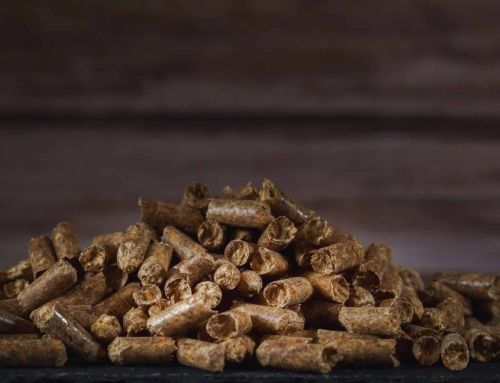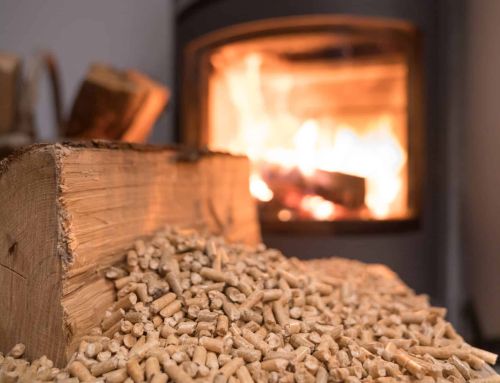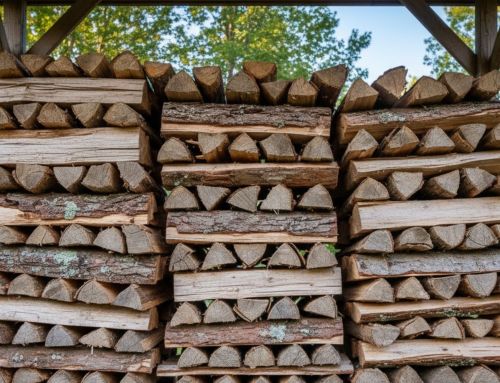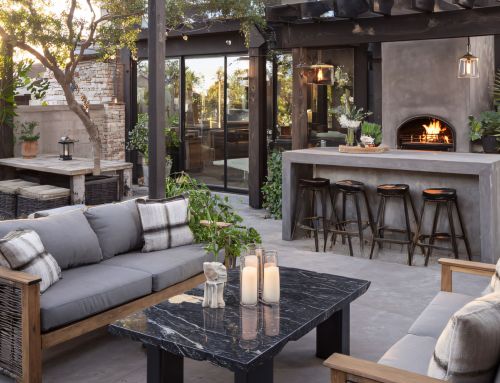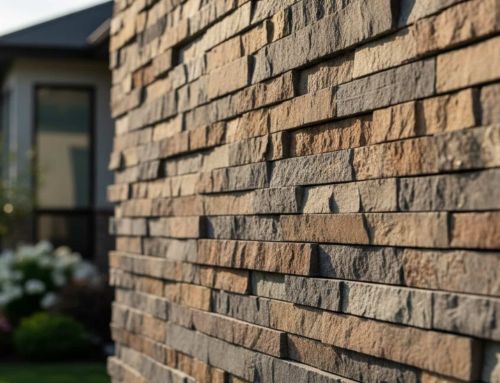Different Types of Wood Mulch: Choosing the Best for Your Landscape
Spring is here and that means it’s time to set our sights on the great outdoors. Spring cleanup season is upon us and soon we’ll be enjoying the warmer days by planting, seeding, fertilizing and mulching to get ready for the summer.
Mulching is not only for aesthetics, it performs a vital function for your plants. It reduces weeds, maintains soil temperatures and moisture, plus it looks beautiful. It comes in all different shapes, sizes and colors. There are many mulch types available, each offering unique benefits and appearances to suit different landscaping and soil needs.
Garden mulch is a layer of material placed on top of soil to improve soil health, retain moisture, and control weeds.
Here are a few tips for choosing the right mulch type for your landscaping needs.
When purchasing mulch, it’s important to select reputable mulch companies to ensure the quality and safety of your mulch, especially when considering colored or specialty mulch options.
Introduction to Mulching
Mulching is a time-tested gardening technique that involves spreading a protective layer of material—called mulch—over the surface of your soil. This simple step can make a world of difference in your landscape. By retaining soil moisture, mulch helps your plants thrive even during dry spells, while also suppressing weed growth and keeping soil temperature more consistent throughout the seasons. There are many types of mulch to choose from, including organic mulches like wood chips, pine bark mulch, and hardwood bark mulch, as well as inorganic mulches such as stone and rubber mulch. Each type of mulch offers unique benefits, so selecting the right one for your garden can improve soil health, reduce maintenance, and create a lush, beautiful outdoor space. Whether you’re looking to boost your flower beds or protect your vegetable garden, mulching is a smart, effective way to support your landscape.
Know Your Options: Types of Mulch
First, decide what mulch will fit your needs. Choosing the right mulch can be tricky. You have several options. Consider what type of material to use, what color suits your landscape and how much mulch you’ll actually need.
Wood based mulches, such as wood chips and shredded wood, are popular choices for landscaping. These mulches decompose slowly, making them ideal for use around trees and shrubs. Wood based mulches help retain moisture, suppress weeds, and improve soil structure as they break down, enriching the soil with organic matter and supporting plant health.
You’ll also need to decide whether you want to purchase your mulch in bags or in bulk. Bulk is cheaper but there’s usually a minimum order. If you’re just mulching a few beds or pots you may want to opt for bags. If you have large flower beds or a lot of large plantings of shrubs and trees, bulk might be a better choice.
Let’s look at some of your options for type and color.
Hemlock: Hemlock mulch has an attractive red/orange tone and helps to repel some insects. It adds rich luxurious color to your landscape. Hemlock is very aromatic. Like cedar and pine bark mulch, hemlock decomposes slowly so it will last an entire season.
Mixed Bark/Colored Bark: This is a recycled material usually made from brush and logs. Bark mulches break down quickly and have nutrients to fortify your soil. Natural colorants make this good for adding color to your landscape. Generally available in red, brown and black. Wood mulches and other wood mulches differ in appearance, decomposition rate, and environmental impact, so consider your needs when choosing between them. Shredded bark and shredded wood mulch decompose faster than larger wood chips, providing quicker soil enrichment and improved moisture retention.
Pine: Pine bark mulch is primarily obtained from pine trees and has a natural dark rich color and a pine scent. It decomposes slowly and is also relatively inexpensive. Pine bark mulch is a perfect soil conditioner for acid loving plants like hollies and azaleas. Pine needles and pine straw, both derived from pine trees, are also excellent mulch options. Pine straw offers a natural appearance and is especially suitable for acid-loving plants such as Japanese maples and witch hazel. Fluffing pine straw during application improves coverage. While pine needles can slightly acidify the soil, they generally do not cause significant changes to soil pH, making them suitable for a variety of plants.
Cedar Mulch: Sourced from cedar trees, cedar mulch is known for its aromatic qualities and natural oils that help repel pests. It is decorative, long-lasting, and commonly used in landscaping to enhance garden aesthetics and suppress weeds.
Hardwood Mulch: Made from the bark of hardwood trees such as oak or maple, hardwood mulch enriches the soil and provides nutrients to the soil. However, it can make the soil less acidic (more alkaline), which may not be ideal for plants that require acidic soil. Choose 100% hardwood mulch from reputable suppliers to avoid contaminants.
Mushroom Compost: Mushroom compost is a specialized organic mulch and soil amendment made from a blend of peat moss, ground corn cobs, animal manure, and straw. It is valued for retaining moisture, providing nutrients, and regulating soil temperature.
Grass Clippings: Grass clippings are an organic mulch option, especially useful in vegetable gardens. They are readily available and help retain soil moisture, but avoid using clippings from chemically treated lawns.
Leaf Mold: Leaf mold is created from decomposed leaves and is rich in organic material and organic matter. It improves soil moisture retention, enhances soil structure, and supports the soil microbiome, making it an excellent mulch for garden beds.
Compost Pile: Any organic material, such as shredded leaves or kitchen scraps, can be composted in a compost pile to create mulch that feeds plants and adds nutrients to the soil. Composting is an accessible way to recycle organic material and improve garden health.
Stone Mulches & Inorganic Mulch: Stone mulches and other inorganic mulch options are durable and long-lasting. They absorb heat, making them suitable for drought-tolerant or heat-loving plants, but may not be ideal for all plant types.
Recycled Rubber: Recycled rubber mulch, made from old tires, is durable, stable, and environmentally friendly. It is available in various colors and is often used in playgrounds and landscaping.
Cocoa Bean Shells: Cocoa bean shells are a by-product of chocolate production and are used as mulch for their aesthetic appeal and pleasant fragrance. However, they can be toxic to pets, so use with caution.
Organic mulch enriches the soil as it breaks down, improving soil structure and supporting plant health. As mulches decompose, they can influence soil pH and contribute to overall soil health.
Benefits of Using Mulch
Incorporating mulch into your garden beds brings a host of advantages that go beyond just a tidy appearance. Wood mulch and other organic mulches are especially valuable, as they gradually break down and enrich the soil with organic matter, improving soil structure and feeding your plants with essential nutrients. This process not only helps retain soil moisture—reducing the need for frequent watering—but also plays a key role in suppressing weed growth, making garden maintenance much easier. Inorganic mulches, such as rubber mulch and stone, are excellent for stabilizing soil temperature and preventing erosion, especially in areas prone to heavy rain or wind. Pine bark mulch and bark mulch are favorites for their ability to enhance both the health and look of your landscape. By choosing the right mulch for your needs, you can create a healthier, more resilient garden that requires less effort and fewer chemical inputs.
Bulk or Bags?
If you don’t have a lot of mulching to do, several bags may be plenty. Bags usually contain around 2 or 3 cubic feet per bag. This is enough to cover approximately 24 square feet to a depth of 1-inch per bag.
Bulk mulch is sold in cubic yards and is typically delivered to your home, or requires a pickup truck to haul. One cubic yard will cover 162 square feet (13′ X 13′) to a depth of about 2-inches.
Whether you are buying bags or in bulk, make sure you check the quality of your mulch. High-quality material will offer consistent color and last for an entire season. If you buy in bulk, make sure that your supplier uses an industry-accepted measurement protocol to ensure that you get what you pay for. It’s important to source your mulch from reputable suppliers or mulch companies that sell mulch, as this ensures you receive quality materials for your landscaping needs.
At Old Station Outdoor & Landscape Supply we sell mulch in both bulk and bags, offering the highest quality premium mulch from Maine. It offers consistent color, 100% Canadian bark with no filler or waste debris ever used. All our mulch is dye-free, the only except being the black mulch. We provide our customers with fast and reliable delivery and accurate yardage.
Our professional, friendly staff can help you to make the perfect choice for your landscaping needs and we’re committed to providing the level of service you deserve. Plus, for every cubic yard of loam and mulch we sell, we donate $1 to a local charity. Call us today we’re always here to help you!
Applying Mulch Correctly
Getting the most out of your mulch starts with proper application. Begin by selecting the type of mulch that best suits your garden’s needs, considering factors like your local climate, soil type, and the specific requirements of your plants. Before you apply mulch, clear away any weeds and debris to give your plants a clean start. Spread a layer of mulch about 2 to 3 inches deep over the soil surface, being careful to keep the mulch a few inches away from plant roots and stems. This helps prevent issues like root rot and overheating, which can occur if mulch is piled too closely against plant bases. Remember, the right mulch type and careful application will help your plants thrive while keeping your garden looking its best.
Mulch Maintenance and Upkeep
While mulch is a fantastic way to reduce garden chores, a little maintenance goes a long way in keeping your landscape healthy and attractive. As organic mulches decompose, you’ll need to replenish them periodically to maintain the ideal depth and continue reaping their benefits. Regularly check your mulch for weeds or fallen debris, and remove them to keep your beds tidy. If you notice signs of pests or diseases—like mold or insect activity—address them promptly to protect your plants. For extra weed control, consider laying down landscape fabric beneath your mulch, which acts as a barrier to prevent unwanted growth. With a bit of routine care, your mulch will continue to support your garden’s health and beauty season after season.
Mulch and Local Regulations
Before you settle on a mulch type, it’s wise to check your local regulations and guidelines. Some communities have restrictions on certain types of mulch, such as dyed mulch or rubber mulch, due to environmental or safety concerns



